The protector mindset is vastly different from other frames of the mind. Primarily, it is less selfish and it certainly is willing to sacrifice a lot more. But where this mindset come from, and why does it enable such a lack of self-interest?
From a biological standpoint, this makes sense. Someone has to be the protector or the herd will be killed off. This means that some people are born with an innate sense of sacrifice and duty.
Does this mean that those who aren't born with it cannot acquire it? I think that this mindset can be taken on at any time in life, either through certain events or a willing adaptation to it.
The protector mindset is an ethos that takes on the responsibility to preserve the safety of others over self-interest. Have you ever wondered why members of the military stay in service for 20-years when they make significantly less than they could in the private sector? How about Law Enforcement, who are spat on and despised, yet continue to protect and serve?
The answer lies in the Sheepdog Ethos, a protector mindset. These people would rather sacrifice their own joy and happiness to preserve the ability of others to live a peaceful life.
Above all, this mindset is a rare and precious commodity. It enables the pursuit and preservation of law and order; it allows everyday citizens to pursue life, liberty, and happiness.
The protector mindset is not reserved for any class of people. Rather, it is found in people who have been raised to care more about others than themselves.
The protector mindset can also be found in people who have survived traumatic events and are resolved to not allow such things to happen to other people.
This mindset can also be found in people who choose to serve something greater than themselves, even if for selfish reasons. By joining the military or serving as first responders, they are exposed to the ethos and adapt to it.
Parents often take on the protector mindset when they have children, because protecting the innocent lives of their offspring becomes an innate instinct. While this doesn't always hold true, it does for many.
Cultivating the protector mindset requires deliberate action. Here’s how individuals and communities can nurture this vital mindset.
Teaching empathy is key to developing the protector mindset. Encourage empathy in children by modeling kind behavior and fostering connections within the family. Social-emotional learning programs in schools also help. When people understand and care about others, they become more willing to protect them.
Storytelling, especially about real-life heroes, builds empathy. Hearing about those who sacrificed for others can inspire similar actions.
Empathetic learning enforces the why behind what we do. If people buy into the mindset because they want to be like someone else, they are more likely to fully embrace it.
Service fosters a sense of duty to others. Encourage individuals to volunteer, participate in community projects, or mentor others. Engaging in service develops a strong connection to the community and an understanding of the value of protecting others. Studies show that volunteering boosts prosocial behavior, reinforcing protective instincts.
Programs emphasizing duty and service—whether through church, scouting, or civic organizations—reinforce these values.
Our society has done a poor job instilling the value of service in younger generations. We are glamorizing a lifestyle of self, rather than emphasizing the importance of sacrifice. We can turn this around by promoting and honoring those who serve others.
Physical and mental resilience is essential for protectors. Encourage self-defense training, fitness, and emergency preparedness. These activities build confidence and the ability to act in crises. Martial arts, for example, combine discipline with defensive skills.
Military and first responder training emphasize toughness and adaptability. Learning to stay calm under pressure helps people make quick, decisive actions to protect others.
Unfortunately, the modern public-school system does little to build real physical and mental toughness in our youth. If we want to see a growth in the protector mindset, we must implement systems that promote true toughness and resilience.
Creating a culture of responsibility nurtures protectors. Hold individuals accountable for their actions at home, in school, and in the workplace. Emphasize ethical behavior and reward those who take initiative to protect others. This culture of responsibility ensures that people step up when needed.
Organizations with strong ethical leadership promote the protector mindset. Leaders who value accountability inspire others to do the same.
Responsibility and accountability are the guardrails that ensure the protector mindset does not turn into an elitism mindset. While protectors are necessary to society, it can turn bitter over time due to how thankless the job is.
Role models are powerful. Share stories of everyday protectors—military, law enforcement, and ordinary citizens. Introduce young people to these heroes to inspire them. Highlighting protectors encourages others to adopt these values.
Mentorship also plays a critical role. Connecting individuals with mentors who embody the protector ethos strengthens this mindset across generations.
There are many incredible role models for the protector mindset. We need to promote these role models and as a society, choose to honor them.
Self-sacrifice is at the heart of the protector mindset. Reinforce that fulfillment comes from serving others, not pursuing self-interest. Teach individuals that true success means protecting those who cannot protect themselves.
Historical and religious teachings often emphasize self-sacrifice. Integrating these lessons into family life and education helps people appreciate the importance of protecting others.
In a society that promotes self above everything else, we must teach the true value of self-sacrifice. There is little more satisfying than serving others.
Trauma survivors often develop the protector mindset. Provide support to help them channel their experiences into protective actions. Trauma-informed care empowers individuals to use their pain to prevent harm to others.
Churches and community organizations can play a crucial role here, offering support networks that foster healing and growth while encouraging protective behavior.
Being supportive is critical to the healing process, and often determines the mindset on the other end of a traumatic event. Healing in an environemnt of strength will typically lead to a stronger outcome.
The protector mindset is critical to a society that wishes to intimidate the intimidators, and protect the innocent. This Sheepdog Ethos ensures law and order are maintained, justice is achieved, and people are free to pursue the life they desire.
If you are a protector, drop us a comment! If you are on the edge and think you might wish to become one, let us know.
Don't forget to like, share, and comment on this article to let us know how we are doing.
The warrior mindset goes beyond the battlefield, bringing a strategic, resilient, and steadfast approach to life.
This article unpacks the warrior mindset, offering real-world tactics to adopt its core principles for handling adversity and achieving lasting success with clarity and courage.
The warrior mindset involves psychological resilience and behaviors such as self-motivation, perseverance, self-confidence, and optimism, which transform challenges into opportunities for growth.
Mental toughness, akin to physical strength, is built through regular practice and fostering healthy mental habits, leading to better stress management, well-being, and performance under pressure.
Applying the warrior mindset in everyday life includes practicing mindfulness, collaborating with mental health professionals, and embracing challenges to foster personal growth, focus, and a positive attitude amidst life’s distractions.
The warrior mindset is not just about the ability to wield a sword and charge headlong into battle. It’s a set of psychological traits and behaviors designed for optimum performance—a resilience engrained in the soul that persists in the face of adversity. Consequently, this mindset transforms challenges, mistakes, and failures into stepping stones rather than stumbling blocks.
It’s the common attribute of elite human performance, enabling them to endure and learn rather than be defeated by performance degrading effects.
Self-determined motivation, perseverance, self-confidence, optimistic thinking, and a buoyant attitude comprise mental toughness. These attributes can be cultivated systematically by integrating mental training programs into your schedule, a process that enhances motivation and commitment.
This mental toughness also heavily relies on emotional regulation skills and psychological skills. Techniques such as mindfulness and deep breathing fine-tune focus, while acknowledging emotions rather than being controlled by them proves instrumental in pushing through challenges.
Military personnel typically exemplify the warrior mindset. Of course, their training emphasizes the development of a resilient warrior mindset and is vital for managing the psychological and physiological impacts of directly engaging with the enemy and facing enemy fire.
Beyond mastering combat mechanics, these warriors also prepare to deal with the psychological impact and physiological effects of close-range combat. They rely on professional development sessions and focused studies to comprehend the expectations in hostile environments and to promote effective split-second decision-making.
Furthermore, realistic combat training, incorporating exercises like the use of rubber bullets, prepares personnel for actual combat and cultivates a resilient warrior mindset necessary for dealing with combat’s psychological trauma. This approach is also beneficial in law enforcement training.
Mental strength revolves around managing life’s challenges, pressures, and stressors. It involves skills like emotional resilience, self-awareness, and adaptability in constant change. Similar to physical strength, mental toughness is built through consistent practice and the establishment of healthy mental habits.
Moreover, healthy coping mechanisms, such as managing conditions and negative thoughts without suppression, seeking solutions for issues, and adapting to life’s ups and downs effectively, form the basis of mental strength. Achieving mental strength leads to improved adaptive mental health functioning, well-being, reduced stress levels, better quality of sleep, and an ability to perform under pressure.
Physical and mental strength complement each other, both crucial for effectively handling high-stress situations. Recovering from a loss of balance, for instance, is not just a physical endeavor but also requires mental resilience to quickly adapt and exert force, showcasing the interplay between the two types of strengths.
While physical strength is developed through consistent physical exercise, likewise mental strength is forged by exercising the brain and cultivating resilient mental habits. Mental strength plays a key role in managing anxiety and stress, allowing individuals to reframe negative thoughts and shift perspectives on adverse circumstances.
Developing mental strength hinges significantly on self-discipline. It involves:
Setting realistic goals
Providing direction and purpose
Preventing procrastination
Making task completion easier
Being mentally strong fosters courage and self-belief, equipping individuals to tackle problems head-on and survive challenging situations.
Obviously, building mental strength and overcoming limitations involves stepping out of one’s comfort zone, while a high internal locus of control fosters continuous pursuit for growth. Adaptability gained through mental toughness allows for flexibility in achieving outcomes and viewing challenges as opportunities for growth.
The development of mental strength can incorporate:
Mindfulness practices
Collaborations with mental health professionals
Journaling
Self-compassion practice
Stepping beyond comfort zones
Upholding a daily routine
Sustaining strong connections
Understanding one’s underlying motivations (‘why’) provides the resilience to stay motivated during tough times, and visualizing oneself as a warrior enhances self-perception as strong, capable, and courageous.
To embrace challenges is to face challenges head-on, confront difficult issues with determination, resist defeat, and accept discomfort as a pathway to strength. A positive attitude and open mindset when faced with challenges can lead to significant personal growth and a more meaningful life.
Particularly, gratitude for challenges encountered is essential for building mental toughness and can result in a greater sense of accomplishment once those challenges are conquered, ultimately helping you achieve success.
Maintaining focus and positivity in the midst of distractions is a crucial element of the warrior mindset. Techniques like:
using headphones or earplugs to block out external noise
creating a designated workspace free from distractions
practicing mindfulness and meditation to improve concentration
setting specific goals and breaking them down into manageable tasks
Using certain techniques to optimize performance can significantly improve concentration in noisy environments.
Furthermore, using humor can serve as a response stress reliever and coping mechanism during challenging times, helping to alleviate fears and connect with others.
Across different periods in history and various fields, individuals have manifested the warrior mindset, exemplifying resilience and mental fortitude. George Washington, for instance, displayed a warrior’s resolve and mental toughness by overcoming the loss of his first battle, leading a nation through its formative years.
In literature, Napoleon Hill exemplified the warrior mindset, selecting the impactful title ‘Think and Grow Rich’ under pressure, which led to a best-selling success.
In the battle of life, the warrior mindset is your greatest ally. It’s a blend of mental toughness, resilience, and an unyielding focus that transforms adversity into stepping stones for success. Whether you’re a soldier on the battlefield or an individual navigating life’s challenges, developing and applying this mindset can lead to extraordinary feats.
The warrior mindset is a state of mind that allows you to face challenges and adversity with courage, strength, and determination, always focused on victory and achieving the goal. Every decision is made with this goal in mind.
The rules of a warrior mindset, as outlined by Musashi, include principles such as not thinking dishonestly, training in the Way, becoming acquainted with every art, and developing intuitive judgment and understanding for everything. These principles guide individuals in cultivating a strong and focused mindset.
Integrate mental training programs into your regular schedule, set realistic goals, manage conditions and negative thoughts without suppression, and adapt to life's ups and downs effectively to develop mental toughness.
Mental and physical strength are essential for effectively managing high-stress situations, as they are complementary to each other.
The warrior mindset is exemplified by George Washington's resilience after a loss and his leadership during the nation's formative years.
The difference between bravery and courage lies at the heart of their application. One is an impulsive response to danger, the other an intentional application of will in the face of fear.
Bravery is often a daring leap, impulsive and fiery in the face of danger. Courage, on the other hand, involves thoughtful action, grounded in self-awareness and conviction.
Stay with us as we uncover, through simple definitions and compelling distinctions, how these two attributes operate distinctly and how their understanding shapes our daily challenges and triumphs.
Bravery is a bold and often impulsive response to danger, characterized by a unique mental state in which fear is largely absent, and is tied to immediate decisive action.
Courage is a more deliberate and reflective journey involving self-awareness, living with integrity, and possessing the vitality to persist through challenges, extending beyond physical risks to encompass moral adversity.
The terms bravery and courage are distinct: bravery is typically a quick reaction to immediate threats, while courage involves mindfulness and the conscious choice to persevere in the face of fear, aligned with deeper personal values or societal ideals.
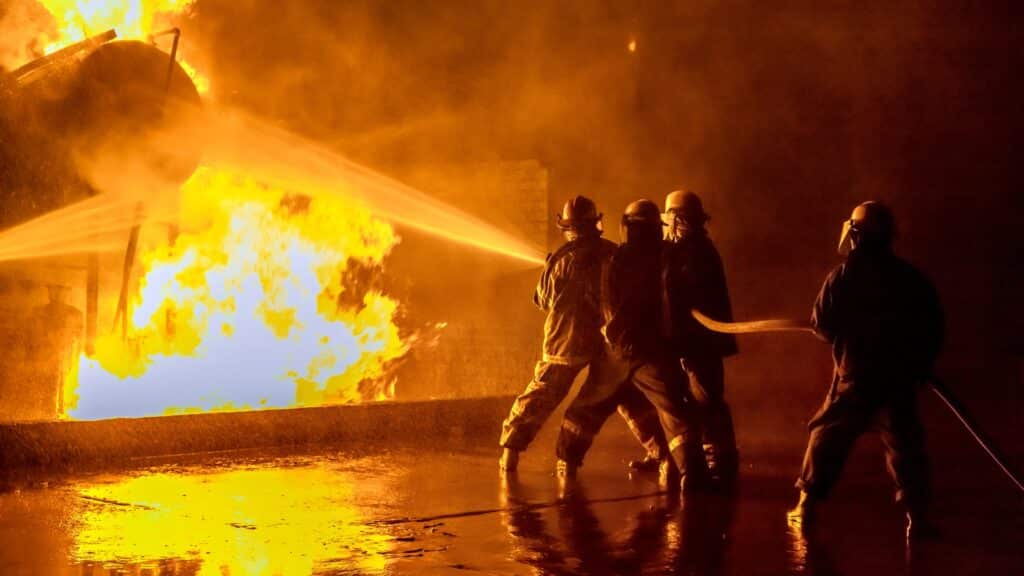
The concept of bravery is deeply rooted in our linguistic history. The term ‘bravery’ originates from the Middle French term ‘brave,’ meaning ‘splendid’ or ‘valiant,’ and is linked to the Italian word ‘bravo,’ suggesting ‘brave’ or ‘bold’. This linguistic heritage provides a glimpse into the essence of bravery: an audacious boldness in the face of danger or adversity.
Bravery, in its purest form, is marked by:
A unique mental state where fear is largely absent
Allowing for decisive and immediate action in the face of danger
Fearless determination
Mental fortitude necessary to confront challenges head-on, often in situations that would cause most to retreat.
Imagine the scene of a burning building. Amidst the chaos and fear, a firefighter rushes in, fearlessly navigating the blaze to rescue those trapped inside. Or consider a soldier, steadfast in the turmoil of battle, placing their life at risk for the safety of others. These acts of bravery demonstrate an unwavering resolve that transcends fear and embodies the essence of bravery.
True bravery is not a reckless dash into danger; it is a calculated act of boldness, fueled by an innate sense of duty or moral courage. True courage is the courageous leadership that steps up when others step back, the courageous acts that make headlines and inspire others.
In essence, bravery is:
the daring audacity that fuels heroic deeds
the spark that lights the path through the darkest of times
the voice that says, “I can,” even when the odds suggest otherwise
the courage that shatters the status quo and pushes the boundaries of what is possible.

While bravery often takes center stage in tales of heroism, courage quietly weaves its way into every facet of our lives. Unlike the bold, often impulsive nature of bravery, courage involves a deeper, more introspective journey. It is a journey marked by:
self-reflection
integrity
vitality
persistence
faith
The path requires courage, as it starts with confronting personal truths. It peels back the layers of our being, acknowledging our fears, faults, and vulnerabilities. This process of self-reflection is a stepping stone towards personal change, shaping us into courageous individuals capable of facing life’s challenges with unwavering resolve.
The courage journey also involves living with integrity, which requires taking responsibility for one’s thoughts, feelings, and actions, and altering behaviors to live authentically. It takes moral courage to stand by our principles and values, even when they challenge the status quo or confront risk.
Vitality, another component of psychological courage, involves seizing life with a positive spirit, readiness for both success and failure, and maintaining hope and determination. This zest for life fuels our courage, empowering us to persevere through adversity and persist in our efforts despite obstacles. With more courage, we can face challenges head-on and continue to grow, while also acknowledging the importance of physical courage in certain situations.
Courage is not just about facing physical danger; it is also about taking risks, stepping into the unknown, and embracing change. It requires faith - confidence or trust in oneself, one’s values, goals, and support systems, enabling one to take risks with greater courage. Having a clear purpose or goal enhances courage by giving individuals something to strive for in spite of difficulties.
As we delve deeper into the realms of bravery and courage, one thing becomes clear: although these two words are often used interchangeably, they represent distinct concepts. The key differences between bravery and courage lie in their nature and how they manifest in our actions and decisions.
Bravery is often an impulsive, reflexive response to immediate danger, while courage involves deliberate and mindful decision-making over a longer term. A brave act is typically a reaction to a sudden threat, like running into a burning building to save someone. In contrast, a courageous act involves making a conscious choice, often in the face of personal fears or adversity, like standing up against injustice or pursuing a challenging career path.
While bravery typically involves actions taken in response to physical threats or challenges, both bravery and courage encompass facing not only physical but also emotional and moral adversities. In the ongoing debate of bravery versus courage, bravery could be seen in the soldier on the battlefield, while courage is evident in the whistleblower standing against corporate corruption.
A courageous person often acts with mindfulness, fully aware of the repercussions of their actions, aligning with deep personal values or societal ideals. They demonstrate courageous leadership by making decisions that may not be popular but are morally right, showing that courage involves a deeper level of understanding and intentionality.
Perhaps the most significant distinction lies in their relationship with fear. Bravery may manifest as an absence of fear and an immediate ‘fight or flight’ reaction, whereas courage is characterized by the awareness of fear but the determined choice to persevere due to moral and emotional strength. In essence, bravery faces fear head-on, while courage acknowledges fear but decides to move forward anyway.

Bravery and courage are not just concepts for the battlefield or emergency situations; they permeate all aspects of our lives, including:
Personal growth
Relationship-building
Leadership
Facing adversity
Standing against injustice
Personal growth often requires acts of courage, such as learning something new, stepping into the unknown, or confronting personal fears. These acts may not make headlines like the brave deeds of soldiers and firefighters, but they are just as significant in shaping our personal life. In fact, pursuing dreams requires bravery, as it often involves facing our deepest fears and pushing beyond our comfort zones.
In relationship-building, it takes bravery to admit when one is wrong and say sorry, enhancing interpersonal connections. Courageous leadership is demonstrated when one is willing to face discomfort and uncertainty, inspiring others by taking decisive action.
Facing daily adversity involves courageous actions, such as:
maintaining a positive outlook despite life’s challenges
embracing life’s small joys
standing against injustice
showing strength through our voice when we say no to wrongdoing
Expressions of gratitude, though seemingly simple, require vulnerability and sincerity, making them courageous acts that acknowledge the good in our lives and those around us. Whether it’s standing up for what’s right, pursuing a dream, or expressing appreciation, these acts of bravery and courage shape our lives and the world around us.
Cultivating bravery and courage is an essential part of personal growth. It involves:
Identifying and overcoming beliefs that prevent genuine living
Embracing mistakes
Clarifying personal values
Practicing mindfulness
Overcoming limiting beliefs can lead to stronger personal relationships and the ability to engage in courageous conversations. These interactions, marked by authenticity, vulnerability, mutual understanding, and respect, foster a deeper connection with others and with ourselves.
Embracing mistakes and clarifying personal values bolster confidence and inspire individuals to act in alignment with their beliefs. This alignment, coupled with mindfulness practices like taking time to pause before acting and engaging in mental fitness exercises, can enable individuals to make a conscious decision, acting with intention and control, enhancing their courage and fostering virtuous emotions.
Cultivating bravery and courage is not just about personal growth. It extends to our professional lives as well. Building emotional courage in the workplace involves:
Exercising the ability to handle challenges without compromising integrity
Promoting an environment of accountability
Enhancing leadership effectiveness
Whether it’s a personal or professional setting, cultivating bravery and courage can lead to profound growth and meaningful change.
In essence, bravery and courage, while interrelated, stand as distinct concepts. Bravery, rooted in boldness and fearlessness, allows us to confront immediate danger with unwavering resolve. Courage, on the other hand, involves a deeper journey of self-reflection, integrity, and faith, empowering us to face not just physical threats, but emotional and moral challenges as well.
As we navigate through life, let us strive to cultivate both bravery and courage, for they are the compass that guides us through adversity, the beacon that lights our path to personal growth, and the bedrock upon which we build our lives.
Yes, there is a difference between courage and bravery. Courage involves a conscious decision to act despite fear, driven by moral or virtuous values, while bravery is an immediate response to a situation, usually characterized by an absence of fear.
Courage involves mindful consideration of risks and making conscious decisions despite fear, while bravery is more spontaneous and involves setting aside fear. Both traits have their appropriate moments in both personal and professional life.
The true meaning of bravery is the ability to face danger, fear, or difficulty with courage and mental strength. It's about confronting frightening things without flinching, whether it's battling a dragon or entering a new environment.
Bravery and courage can be applied in personal growth, relationship-building, and leadership, and help in confronting fears, admitting mistakes, taking decisive actions, and standing against injustice. Embracing these qualities can bring about positive change in various aspects of daily life.
By overcoming limiting beliefs, embracing mistakes, clarifying personal values, and practicing mindfulness, you can cultivate bravery and courage for personal growth, leading to stronger relationships, effective leadership, and authentic living.
Have you everheard of the Sheepdog Mindset, or wondered what sets police and other law enforcement officers apart from the rest of the population? Clearly, they are not average citizens; they are the embodiment of alertness and commitment, trained to confront dangers with a mix of tact and tenacity.
This article unpacks the distinct mindset, roles, and evolution of sheepdog police officers, connecting their deep-rooted protective instinct to the complex realities of modern-day law enforcement.
Law enforcement officers, characterized as sheepdogs, serve a protective role in society, acting out of a sense of duty and responsibility to guard civilians (sheep) from criminals (wolves). They are poised to confront threats with courage and are prepared for action at all times.
The sheepdog mentality extends beyond the professional role, ingraining itself into the personal lives of officers, and emphasizes unwavering commitment, readiness, and the employment of non-forcible skills and tools to protect and de-escalate potential threats.
Police work is dynamically evolving with continuous education, technological advancements, and a focus on community engagement. Sheepdogs are encouraged to adopt a ‘guardian’ mindset, which requires balancing the protective instinct with compassion and effective communication with the community.
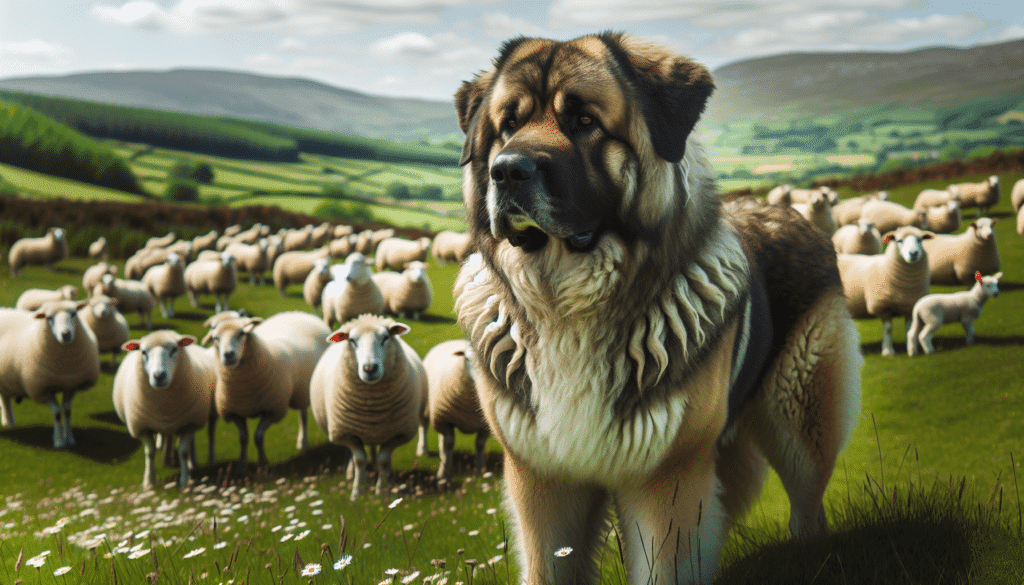
When Dave Grossman, a retired US Army Ranger, introduced the world to the sheepdog concept, he painted a vivid picture of societal roles that resonate to this day. In this triad, the sheep represent civilians, mostly gentle and defenseless, going about their lives with little thought to the wolves, those who harbor ill intentions.
Standing vigilant between them are the sheepdogs, law enforcement officers imbued with a natural protective instinct, a duty to shield the flock from the lurking predators.
These sheepdogs, more than mere figures of speech, embody real people who wear badges and uniforms, always ready for action. Their courage is not born from a desire for accolades but from a deep-seated sense of responsibility that compels them to act when others cannot. It’s a calling that requires a blend of bravery, empathy, and the willingness to confront what most fear.
At the core, the sheepdog mentality is about protection, service, and sacrifice. Law enforcement officers bear the weight of this noble role, accepting the risks that come with standing on the front lines. They are the guardians whose presence often goes unnoticed until danger rears its head, and then, with unwavering resolve, they step forward to face the wolves.
A sheepdog’s life is one of perpetual vigilance, characterized by a state of mental readiness known as ‘condition yellow’. This mindset is not merely about being alert; it’s about understanding the grave reality that wolves exist and that the sheepdog must be ready to confront them at a moment’s notice. The idea that they are modern guardians against societal dangers is not a mere job description; it’s a way of life that many find hard to grasp.
Much like the dynamic between actual sheep and their canine protectors, the sheepdog mentality is often misunderstood and sometimes underappreciated. However, those who embody this mentality do not seek validation; they are driven by a calling to protect lives, an endeavor that transcends personal safety and comfort. Their unwavering commitment to law enforcement values stands as a testament to their dedication, even in the face of criticism and adversity.
For some, the role of the sheepdog transcends the badge, intertwining with their spiritual lives and serving as protectors within their church communities. The sheepdog’s mission is not a temporary assignment; it’s a lifelong dedication that spills over into every facet of their lives, advocating for the possibility of a safer world for all.
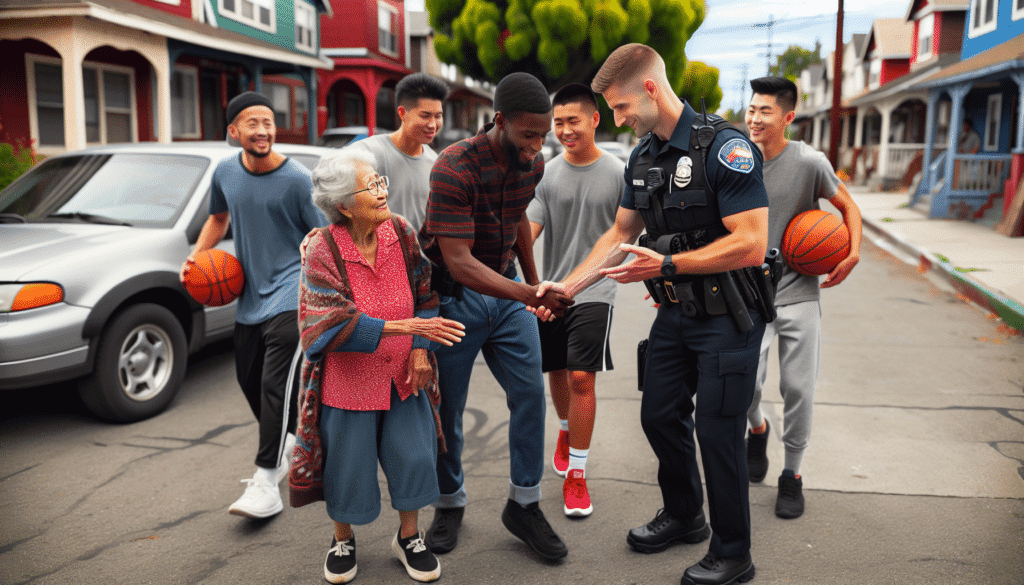
The sheepdog analogy implies that, much like a shepherd’s dog among the flock, protectors should be an integral part of the community they serve. This integration is exemplified in community policing initiatives led by veteran officers who advocate for a compassionate and mental health-focused approach, strengthening the bond between police and public. The implementation of advanced technologies like cloud-based platforms and GPS has further increased officer accountability and service reliability, fostering trust within the community.
Specialized company police officers enforce laws tailored to the unique needs of different communities, demonstrating the adaptability and depth of modern policing. As a police officer in this field, there’s a growing call for law enforcement to transition from a ‘warrior’ mindset to a ‘guardian’ mindset, emphasizing the importance of:
community engagement
compassionate behavior
de-escalation techniques
problem-solving skills
In the world of marketing, it’s important to avoid over aggressive tactics, as they can often lead to negative results. But what can ensure a more gentle approach is just what taking inspiration from nature offers, such as the delicate beauty of a blue robin’s egg or the protective strength of a hard blue shell. In this competitive landscape, learning from other warriors in the marketing world can also be beneficial, as the vast majority have valuable insights to share.
However, the sheepdog model is not without its detractors. Critics argue that it may create an unintended divide, suggesting that law enforcement acts on the commands of the ‘master’ (society’s ruling class) rather than the will of the ‘flock’ (the general public).
The sheepdog’s training serves as the linchpin of their response when the peace of the flock is threatened. Proper training is critical for making quick and decisive actions in high-stress situations.
The ICAT program, which combines scenario-based learning with case studies, enhances officers’ critical decision-making, crisis recognition, and communication skills. Active threat assessment training further enables officers to objectively gauge the immediacy and severity of potential threats, informing their decisions on when to de-escalate and when force is necessary.
Studies suggest that military personnel, particularly officers with military backgrounds, might have a greater propensity to use force. However, training programs like Crisis Intervention Training are designed to equip officers with the skills to respond with compassion, utilizing de-escalation strategies to reduce the need for forceful interactions.
A support network, often anchored by the spouse, stands behind every sheepdog, facing unique challenges tied to their partner’s duty. Organizations like the National Alliance for Law Enforcement Support and Police Wives of America offer resources and a community for spouses to share experiences and find solace. In the tragic event of an officer’s death in the line of duty, resources and support, including peer support and counseling, are provided by Concerns of Police Survivors (C.O.P.S).
The stress of police work requires spouses to develop emotional resilience, use coping strategies like mindfulness, and seek professional counseling when needed. Coping with traumatic events as a couple is vital for the healing process, given the nature of incidents commonly encountered in law enforcement. Maintaining emotional and physical intimacy is crucial in these marriages, acting as a bulwark against the job’s demands on the relationship.
Financial stress and the transition to retirement from policing are additional common challenges that require effective planning and communication. Adopting the sheepdog mindset can help officers and their spouses live as the best versions of themselves, creating a supportive environment for their partnership. Effective communication is key to managing the intricate dynamics of police work and its effect on relationships.
With the constant changes in the landscape of law enforcement, officers need to continuously engage in education and training to stay updated with societal changes and new threats.
Technological advancements such as robotics and GPS tracking have brought new capabilities to crowd control and strategic planning, illustrating the progressive nature of policing methods. The significant presence of veterans in the police force, often through a military-to-police recruitment pipeline, has influenced the dynamics of police methods.
Retraining returning veterans in law enforcement is crucial to ensure that their military experience is appropriately adapted to civilian policing contexts, especially in matters of force. This retraining is part of the broader evolution of sheepdog policing, which seeks to harmonize the protective instinct of law enforcement officers with the evolving needs and values of the communities they serve.
As we reflect on the journey through the world of sheepdog policing, it becomes clear that the role of a sheepdog is multifaceted and ever-evolving. From embodying a protective instinct to employing a diverse array of tools, from integrating within society to confronting violence with a measured hand, these guardians play an indispensable role in the fabric of our communities.
The essence of the sheepdog is woven into the lives of those they protect and the families that support them. Let us honor their dedication and embrace the evolution of this noble calling as a beacon of hope in our quest for a safer world.
"Sheepdog" refers to all those in society who serve as protectors, including police, firefighters, EMTs, and military personnel, as mentioned in Col. (U.S. Army Ret.) Dave Grossman's book On Combat.
The sheepdog theory, as explained by Grossman, considers humans to have survival features of both predators and prey, allowing individuals to choose to be wolves, sheep, or sheepdogs.
Yes, military veterans make good police officers due to their sense of service and commitment, as well as their discipline.
The sheepdog mentality is a mindset where law enforcement officers see themselves as protectors of the community, always ready to confront threats and keep people safe.
Dave Grossman, a Retired Army Lieutenant Colonel, pioneered the field of "killology" to redefine our understanding of violence and its psychological impact.
As the man behind the term, Grossman’s military expertise and academic pursuits converge to address the critical issue of how killing affects soldiers and society.
Through his books, such as ‘On Killing’ and ‘On Combat,’ and his active role in educating military and law enforcement personnel, Grossman challenges and equips institutions to better handle the psychological costs of lethal aggression.
Dave Grossman coined the term ‘Killology’ to study the psychological and sociological aspects of killing, aiming to understand and reduce violence, which led to the founding of the Killology Research Group to assess the impact of lethal force on soldiers and law enforcement.
Grossman’s military background, including his time at West Point and as an Army Ranger, shaped his later academic and global educational pursuits, where he has significantly influenced training and understanding in combat psychology and the mitigation of violence.
As an author, Grossman has impacted disciplines related to combat psychology through seminal works like ‘On Killing’ and ‘On Combat’, while also contributing as an expert in legal cases and providing policy advice on violence at the highest levels of government.
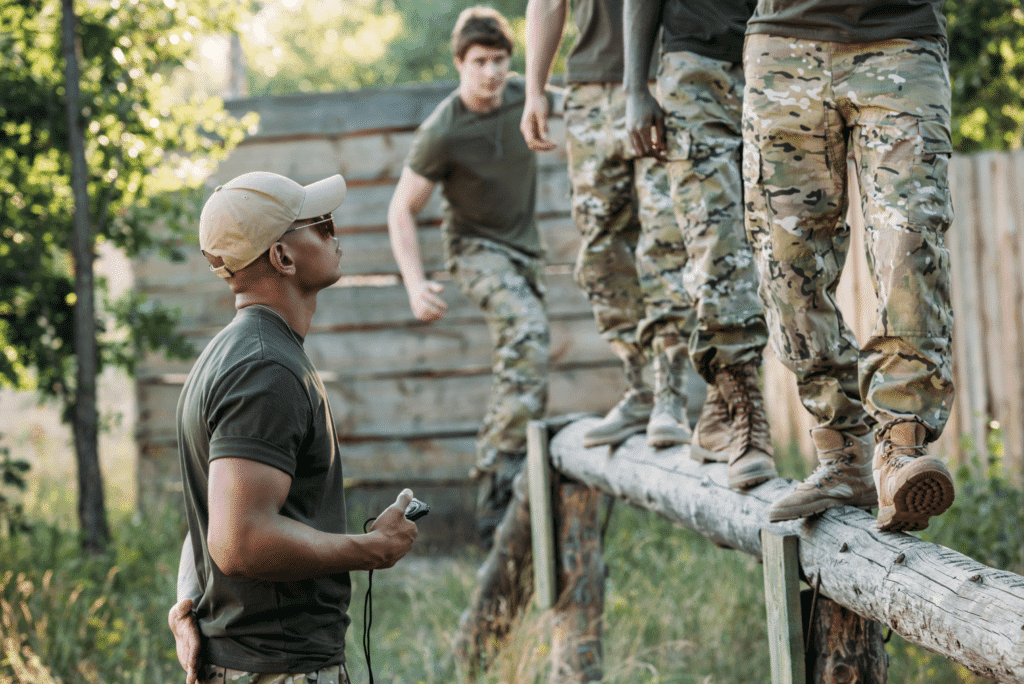
Killology, a term coined by Dave Grossman himself, represents the study of the psychological and sociological aspects of killing. It emerged as a field of scientific endeavor that uncovers the effects of lethal force, aiming to understand and eventually reduce violence in society. Grossman’s commitment to this cause is evident in his establishment of the Killology Research Group, which focuses on studying the influences of lethal force on soldiers and law enforcement professionals.
A deeper exploration of this field reveals that Killology not only focuses on understanding the act of killing, but also investigates the psychological costs and societal implications of violence.
The emergence of Killology signaled a revolutionary contribution to scientific study. It offered a new lens to understand the psychological and physiological effects of killing and combat on soldiers and law enforcement officers. Grossman’s seminal book ‘On Killing’ delves into the psychological processes involved in killing, unraveling how soldiers are trained to overcome their natural resistance to taking life.
The principles of Killology, based on Dave Grossman’s meticulous research and profound understanding of the subject, have been integrated into military and law enforcement programs. These principles contribute to better preparedness for dealing with the psychological aspects of deadly conflicts.
Grossman’s work centrally revolves around the psychological toll of war. His book ‘On Killing’ provides an in-depth analysis of the psychological repercussions of combat and killing. It underscores the mental health toll on soldiers, such as the development of post-traumatic stress disorder (PTSD), a common consequence of learning to kill and experiencing the horrors of war.
Soldiers may also experience intense physical stress reactions during combat, including tunnel vision and shifts in hearing capacity, all of which are explored in Grossman’s research.
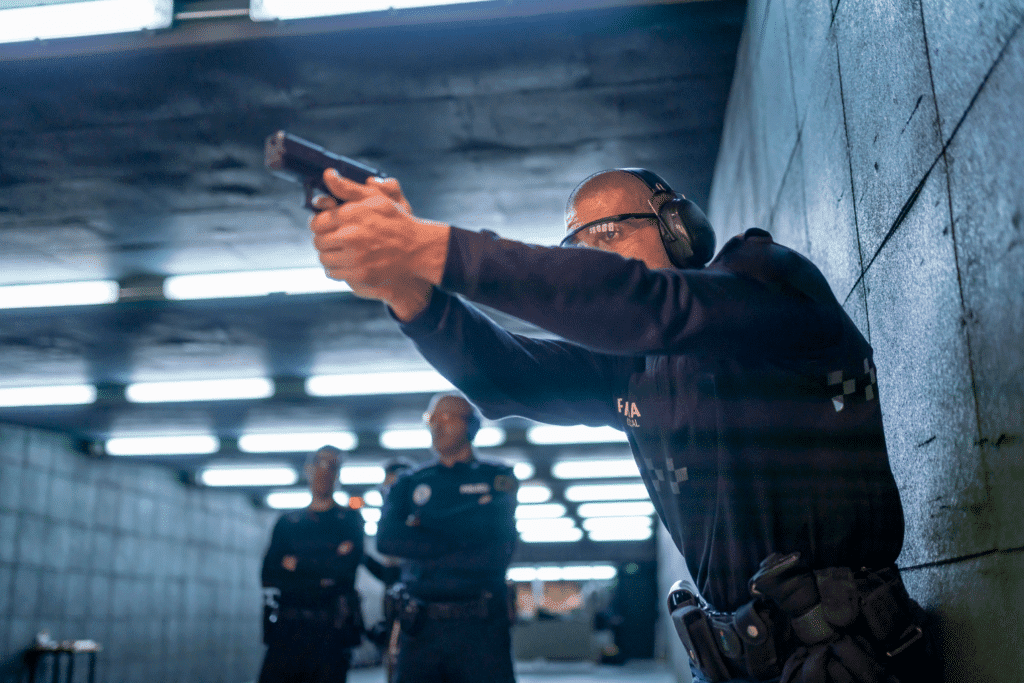
Grossman’s research reaches beyond the battlefield to scrutinize aggression and violence within society. His studies have contributed to major works such as the Oxford Companion to American Military History and the Academic Press Encyclopedia of Violence, Peace, and Conflict. He has also highlighted the prevalence of violent crime in society, using murder and aggravated assault rates as key indicators.
Grossman doesn’t simply identify the problem of violent citizens, but actively promotes violence reduction strategies through his seminars and books, particularly following traumatic events such as school shootings.
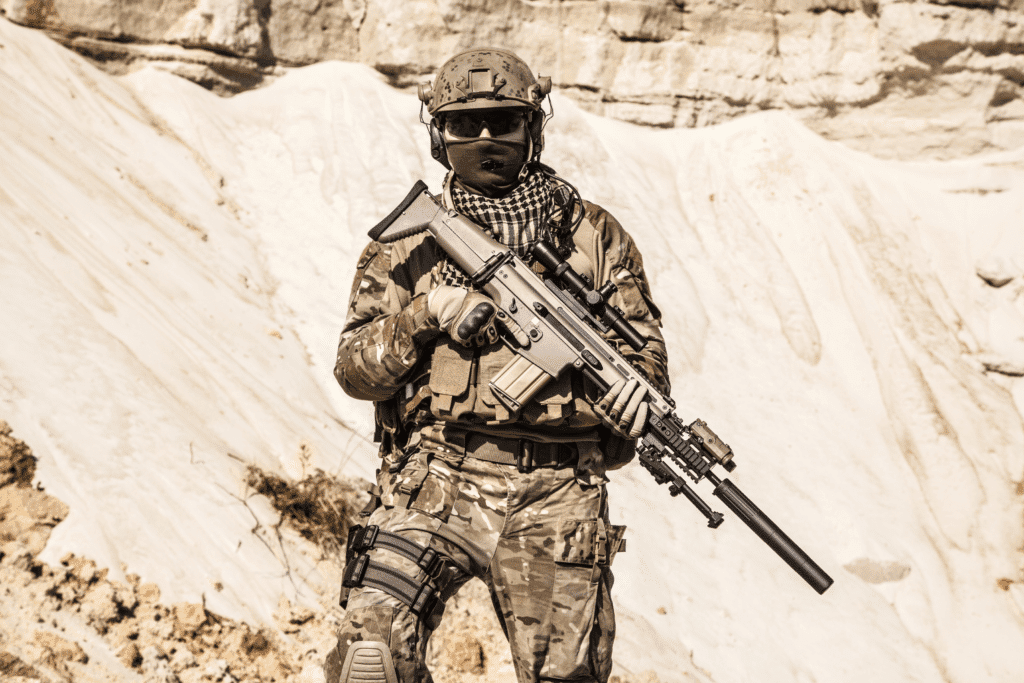
Dave Grossman’s journey from a soldier at West Point to an internationally recognized scholar is one of perseverance, commitment, and dedication to understanding human aggression and violence. Grossman’s military career evolved into a scholarly pursuit, earning him a reputation as an expert on subjects of human aggression and violence.
As a scholarly figure, Grossman authored significant works, delivered speeches worldwide, and became renowned for his expertise in tackling issues related to violence and crime. His contributions have been published in leading law enforcement journals, further solidifying his reputation in the field.
Grossman’s military beginnings were marked by leadership and dedication. As a former West Point psychology professor, Professor of Military Science, and an Army Ranger, he amassed over 23 years of experience leading U.S. soldiers worldwide. During his military service, he:
Served as a sergeant in the 82nd Airborne Division
Held leadership roles as a general staff officer
Was a company commander in the 7th (Light) Infantry Division
His military career includes graduating as a distinguished scholar from the U.S. Army Ranger School, regarded as one of the military’s most rigorous leadership courses, where he learned to pursue noble and worthy things.
Shifting from the battlefield to academia, Grossman took on roles as a psychology professor at West Point and a Professor of Military Science. His teachings significantly influenced military personnel, deepening their understanding of human aggression and the roots of violence.
The impact of his academic pursuits, as highlighted in the Harvard Journal, transcends the confines of the classroom, shedding light on the complex, and often overlooked, psychological aspects of combat.
Grossman’s global influence is evident in his roles as a trainer and educator. He has conducted training for:
military
law enforcement
mental health providers
school safety organizations
Reaching every U.S. state and over a dozen foreign nations, the American Medical Association plays a significant role in the healthcare industry, impacting the lives of our fellow citizens.
His ‘Bulletproof Mind Resiliency’ presentations offer education on psychological resilience amidst violence, showcasing his dedication to sharing his knowledge widely.
Grossman’s literary works have significantly influenced understanding and training practices in combat psychology for soldiers and law enforcement officers. He has written or co-written nine books, encompassing both non-fiction and fiction, exploring diverse aspects of combat psychology, violence, and human aggression. His significant non-fiction works, ‘On Killing’ and ‘On Combat,’ delve into the psychological effects of lethal force and combat stress.
‘On Killing: The Psychological Cost of Learning to Kill in War and Society’ is a seminal work by Grossman that examines the psychological impact of killing on soldiers. The book’s influence spans professional and educational fields, being integrated into the curricula of military academies, law enforcement training, and university courses.
‘On Combat: The Psychology and Physiology of Deadly Conflict in War and Peace,’ another of Grossman’s pivotal works, provides an in-depth look at the physical and mental consequences of combat.
Grossman’s expertise reaches beyond the battlefield, tackling the impact of violence on school safety organizations and mental health providers. He has been involved in counseling initiatives and legal cases following traumatic school tragedies, providing support and advice in critical moments of national tragedy.
His tailored training for mental health professionals and police officers after the Jonesboro school massacre highlights his dedication to aiding the victims of violence.
Grossman’s work also extends into the legal realm, where he has acted as an expert witness and consultant in diverse state and federal court proceedings. His expertise was pivotal during the high-profile UNITED STATES vs. TIMOTHY MCVEIGH case, where he was part of the prosecution team.
In addition to such high-profile cases, Grossman has also lent his advisory expertise to counseling and court cases in the aftermath of multiple school massacres, during crucial moments of national crisis.
Grossman’s courtroom contributions have seen him serve as an expert witness in a variety of legal cases at both state and federal levels. His significant role in legal proceedings, particularly being part of the prosecution team in the infamous United States vs. Timothy McVeigh trial, highlights his expertise in the field.
Beyond these high-profile terrorism cases, Grossman has also been involved in consulting and training for cases following school massacres, such as:
Jonesboro
Paducah
Springfield
Littleton
Virginia Tech
Nickel Mines, PA Amish school massacre

Grossman’s influence extends far beyond the courtroom and the classroom. He has testified before the U.S. Senate, U.S. Congress, and on several occasions to state legislatures, providing expert insights on violence and its effects on society. His advisory role extends to the highest levels of government, as indicated by his participation in President Trump’s Round Table on Violent Video Games following the Parkland school massacre.
Even the President of the United States has cited his contributions in a national address, underscoring his national recognition and influence on policy.
Grossman’s concept of Killology maintains its relevance and is incorporated into diverse training programs for military and law enforcement entities. He actively delivers lectures and seminars, contributing to the continuing education of professionals in disciplines impacted by his expertise.
Looking to the future, Grossman is embarking on new projects and establishing partnerships poised to broaden the reach and application of his work.
In 2022, the Killology Research Group underwent an evolution and rebranding to become Grossman On Truth, LLC, with Dave Grossman leading as director. Under its new name, the organization continues to focus on seminars about the effects of using lethal force, showcasing its commitment to the original mission.
Acknowledging his expertise and contributions, the American Board for Certification in Homeland Security has inducted Grossman as a ‘Life Diplomate,’ and he holds the ‘Life Member’ title with the American College of Forensic Examiners Institute. He continues to address modern threats, writing and speaking extensively on the terrorist threat, particularly in the context of post-9/11 security concerns.
From his military beginnings at West Point to his current endeavors in addressing modern threats, Lt. Col. Dave Grossman’s journey has been marked by constant learning, teaching, and making groundbreaking contributions to our understanding of human aggression and violence. His pioneering work in Killology, his influential books, and his advisory roles in critical moments of national tragedy all underscore his dedication to understanding and reducing violence in society. As we move forward, Grossman’s enduring legacy continues to shape our approach to addressing violence, offering insights and strategies that promise to guide us in creating a safer world.
Police officers are called sheepdogs because it is a metaphorical term that symbolizes their role as guardians and protectors in society, inspired by the concept from Lt. Col. (U.S. Army Ret.) Dave Grossman's book "On Combat."
The sheepdog theory, as described by Grossman, suggests that individuals have the choice to embody characteristics of predators, prey, or protectors based on their survival instincts.
According to Dave Grossman, people can be categorized into three groups: sheep, wolves, and sheepdogs. Most individuals are considered as sheep, signifying kindness and gentleness.
The sheepdog quote on combat highlights the distinction between individuals who protect others, those who harm the innocent, and those who require protection. It emphasizes the importance of standing up against danger.
Killology is a field of scientific endeavor founded by Lt. Col. Dave Grossman. It offers insights into killing in war, the psychological impacts of war, the origins of violent crime, and the recovery of violence victims.
In the metaphorical pasture of life, are you innately watchful, fundamentally peaceful, or driven by darker instincts? These roles of sheep, sheepdogs, and wolves symbolize the innocent, the protectors, and the predators within society.
The insight you gain from this paradigm can transform your perspective on personal safety, societal roles, and assertive conduct. Explore through this article how these archetypes function in reality and how they may resonate with your own experience.
The sheep, wolves, and sheepdogs analogy categorizes people based on their behavior as harmless and vulnerable (sheep), predatory and aggressive (wolves), or protective and courageous (sheepdogs), the latter of whom are primed to confront threats and ensure safety.
Violent crime statistics indicate a decrease in the U.S., with specific demographics and locations being more susceptible to such incidents, underscoring the ongoing need for awareness and protective measures against potential threats.
Sheepdogs play a critical role in society by enforcing laws, preventing crime, and maintaining order, their presence essential for fostering societal growth, security, and a decrease in crime rates.
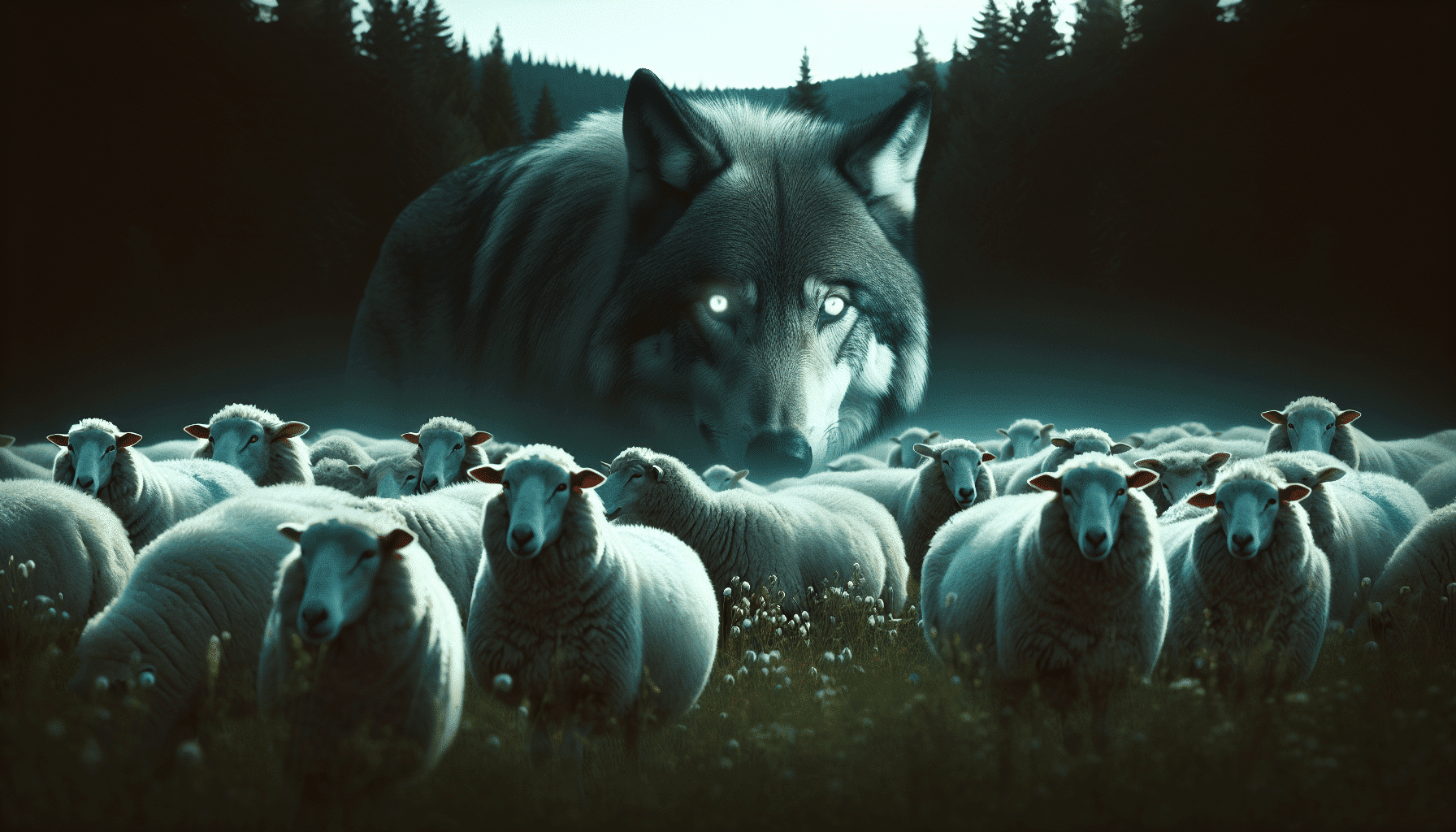
The sheep, wolves, and sheepdogs analogy, while its historical origin is unclear, has been popularized in various contexts, including the military and law enforcement. Notably, retired US Army lieutenant colonel and war veteran Dave Grossman, who has also discussed the mindset of an American sniper like Chris Kyle, has played a key role in bringing this concept to a wider audience.
This analogy essentially categorizes people into three distinct groups:
Sheep: The majority, who are gentle and can only cause harm unintentionally.
Wolves: Predators and aggressive sociopaths who prey on the vulnerable.
Sheepdogs: Ready to confront the wolves and secure the safety of the sheep.
Utilizing this concept, we categorize individuals as per their behavior and mindset. Sheep symbolize those requiring protection, wolves signify aggressive sociopaths exploiting the weaker, and sheepdogs denote protectors of the vulnerable. This analogy serves as an insightful tool to comprehend and navigate worldly realities.

Sheep individuals, in this context, exhibit a gregarious nature, forming close bonds with other sheep, particularly within their own flock. They are highly social and often seek the presence of other sheep to establish a sense of comfort.
In situations involving violence or threats, ‘sheep’ individuals usually gather, confront the danger, and collaborate with their comrades to minimize potential harm. Occasionally, they might seek protection from figures like police officers, likened to sheepdogs in this context.
Living in denial can adversely affect those exhibiting ‘sheep’ behavior, as it obstructs their capacity to identify and address risky or unhealthy situations, leading to psychological distress and stunted personal development. Unfortunately, denial is a widespread trait among the ‘sheep’.
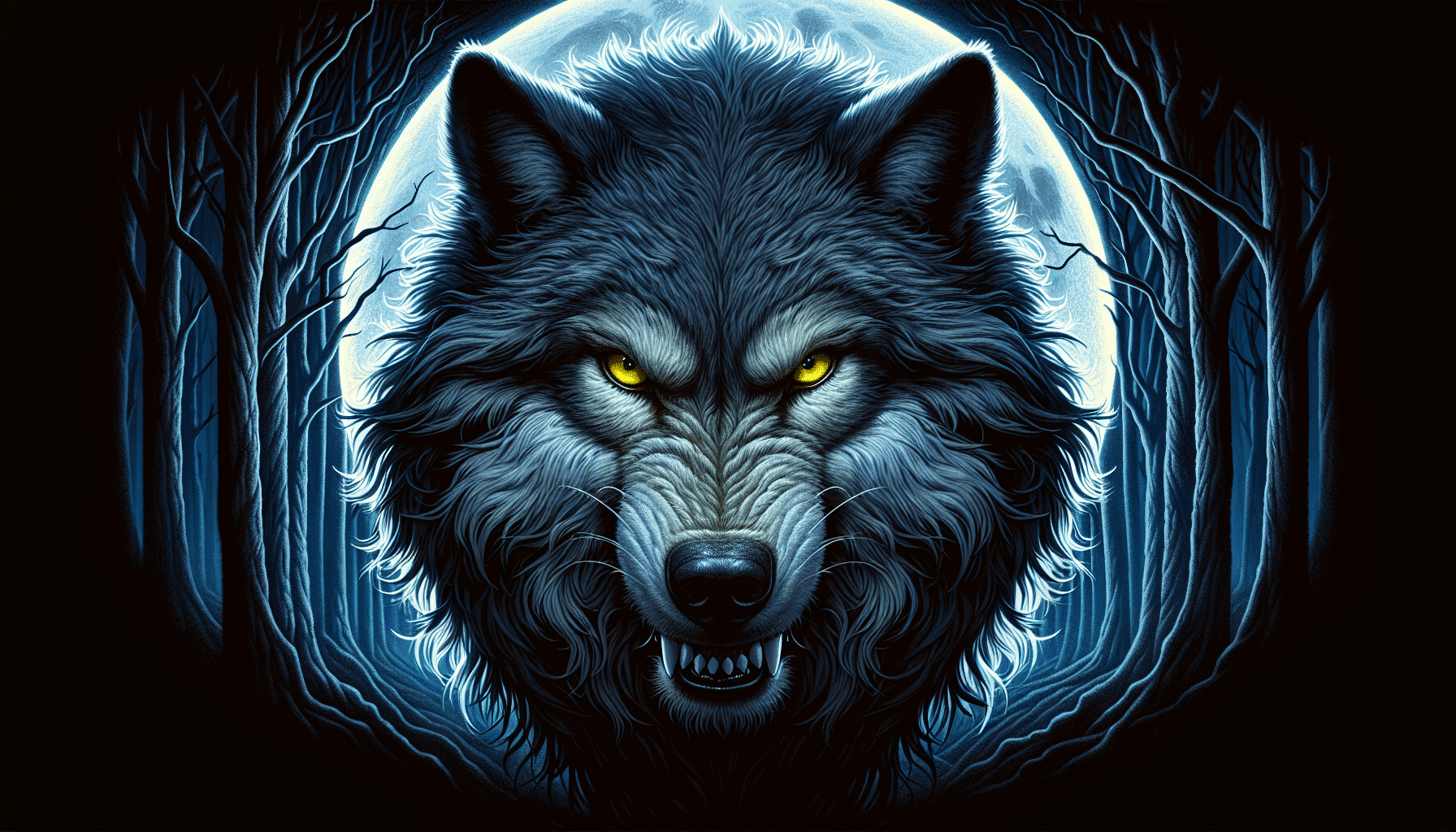
Individuals who target the vulnerable often demonstrate traits including:
Narcissism
Psychopathy
Sadism
Machiavellianism
Antagonism
A strong desire for complete control over others
Aggressive sociopath tendencies
This psychological makeup is often found in the wolves of society. These individuals resort to violence for personal gain, possibly due to a compromised moral compass or a distorted perception of moral principles.
Understanding the psychological factors driving violence is pivotal in addressing and reducing its prevalence. In the battle between good and evil, ‘wolves’ embody the darker aspects of human nature, their actions standing in sharp contrast to the heroism of the ‘sheepdogs’, who courageously confront these ‘wolves’ to shield the innocent.
This dynamic is just what makes understanding these psychological factors so crucial, especially when considering how wolves feed on fear and vulnerability.

Sheep dog, a rare breed, possesses inherent traits of vigilance, bravery, compassion, and intellect, and is recognized for its affinity with children, rendering it as a patient and protective companion.
Characteristics such as gentleness, affection, intelligence, sociability, and a love for enjoyment distinguish their psychological profile.
The sheepdog mentality towards preparedness and vigilance is characterized by possessing survival instincts and traits of predators. They place importance on:
Preparedness
Vigilance
Sound judgment
Maintaining constant awareness of potential threats
Being prepared to safeguard and defend others from harm.
Through rigorous training and mental exercises, including obstacle courses and role-playing scenarios, sheepdogs prepare for hazardous situations. This process helps them develop instinctive and suitable responses, ensuring their safe evasion from threats.
Walking the warrior’s path, similar to the hero’s path, embodies authenticity, maintaining inner composure, and openness to growth, while possessing untapped potential, unexpressed energy, and unfulfilled aspirations.
Sheepdogs demonstrate warrior-like qualities through bravery, courage, and selflessness. They are prepared to enter challenging situations and safeguard others, similar to a warrior’s dedication. Training holds significant importance for a sheepdog following the warrior’s path as it aids in the development of essential skills, mindset, and physical abilities needed to effectively protect and serve others.
As per the FBI, comprehensive data on more than 11 million criminal offenses reported to the Uniform Crime Reporting (UCR) Program indicates that in 2021, violent crime decreased by 1.7% following a 4.6% increase in 2020. Additionally, property crime experienced a 4.5% decrease for the second consecutive year in 2021.
Violent crimes commonly encompass:
Murder
Manslaughter
SA
Arson
Terrorism
Domestic violence
Gang violence
Kidnapping
Despite this, these crimes remain relatively rare when compared to the overall population, but what is important to note is that they still occur.
Individuals within the age range of 18 to 21 are the demographic most prone to becoming victims of violent crime. There are also specific locations that are more prone to violent crime incidents.
Denial is a psychological defense mechanism utilized to mitigate anxiety or distress by disregarding the reality of a situation. It serves as a means for the mind to shield itself from challenging or uncomfortable truths, often stemming from a universal human phobia of facing painful realities.
Denial can have both positive and negative impacts on a person’s response to danger. Although it might provide temporary respite from distress, it can lead to poor decision-making and a reluctance to consider alternative views, thereby impeding effective responses to danger. Making a conscious and moral decision to face the reality of the situation can help overcome these negative effects.
Indicators for identifying the signs of denial in oneself or others include:
Refusing to discuss the problem
Rationalizing behavior
Attributing blame to others or external factors
Downplaying the consequences of actions
Evading accountability for one’s actions

The strong sense of duty and love that sheepdogs have for their fellow citizens is rooted in their ability to combine their capacity for violence with a strong moral compass and empathy for others.
Sheepdogs demonstrate their protective role by utilizing their innate aggression to respond to violence, thereby ensuring the safety and defense of society and its innocent members.
The strong protective instinct of sheepdogs can be traced back to their innate survival instincts, showcasing traits found in both protectors and predators.
Sheepdogs, like police officers and soldiers, bolster public safety by:
Patrolling designated areas
Responding to calls for service
Enforcing laws and regulations
Taking proactive steps to prevent crime
Maintaining community order
Their role is crucial in preserving order, safety, and security within a society, fostering its growth and development, and ultimately shaping a healthy productive citizen.
Research has shown that the presence of sheepdogs in a community can lead to a decrease in crime rates, including homicide, robbery, and burglary. For instance, well-trained sheepdogs have effectively safeguarded sheep from predators such as wolves, coyotes, and mountain lions.
In sum, the sheep, wolves, and sheepdogs analogy provides a unique lens to view societal dynamics and personal responsibility. Sheep, the majority, are gentle, kind, yet vulnerable. Wolves, on the other hand, represent the darker side of human behaviors, preying on the vulnerable for personal gain. Sheepdogs, the protectors, use their capacity for violence out of deep love for their fellow citizens, ensuring the safety and growth of civilization.
Sheepdogs do not necessarily protect sheep from wolves, as this is primarily the responsibility of the shepherd. However, certain larger breeds of dogs can help herd and discourage wolves when trained to do so, working in pairs to protect the flock.
The story of the wolf and the sheepdog is a personal account of a police officer's experiences on the cold streets of a large Canadian city, depicting his journey from a fresh recruit to an experienced street cop dealing with various police calls.
In the military, "sheepdog" refers to the protectors, including police, firefighters, EMTs, and military personnel, who safeguard the innocent from harm. This term denotes those who serve as the guardians or defenders of society.
The concept of sheep, wolves, and sheepdogs describes the different types of people in society: the gentle majority (sheep), the predators (wolves), and the protectors (sheepdogs) who confront the wolves to defend the sheep.
Sheepdogs are willing to use violence to protect and defend, while wolves use violence for their own malicious purposes.
The Sheepdog Ideology Definition is not a simple phrase, or even a single sentence. The Ideology serves as a powerful, guiding world view among our nation's protectors.
In this article, we'll explore this definition and the impact of the ideology on American society.
The Sheepdog Ideology Definition centers on a simple yet profound analogy that compares society to a flock of sheep, with the majority being peace-loving and law-abiding citizens.
Within the flock, however, lurk wolves—criminals and terrorists intent on causing harm.
Lastly, Sheepdogs, those who embrace the role of protector, see themselves as guardians responsible for keeping the flock safe from the wolves.
Sheepdogs face dangerous situations with bravery, even when it involves personal risk.
They willingly assume the responsibility to protect others and serve their community or nation.
Sheepdogs adhere to strong moral principles, ensuring their actions align with the greater good
The Sheepdog Ideology is prevalent among military personnel, law enforcement officers, and first responders. It defines their commitment to safeguarding our society, often making personal sacrifices for the greater good.
Adopting the Sheepdog Ideology involves more than just a job title. It's a mindset, a way of life that focuses on protection, vigilance, and dedication. Sheepdogs always stand ready to defend the flock, and their unyielding spirit inspires those around them.
The Sheepdog Ideology embodies the best of humanity—courage, compassion, and selflessness. Those who embrace it stand as guardians, willing to sacrifice themselves for the greater good.
The world is a safer place thanks to their vigilance and commitment.
The Sheepdog Ideology is a mindset adopted by military personnel, law enforcement officers, and first responders who see themselves as protectors and guardians of society, responsible for keeping the flock safe from harm.
It's called Sheepdog Ideology because it draws an analogy between society and a flock of sheep, with sheepdogs being the protectors who keep the flock safe from wolves, which represent criminals and terrorists.
While often associated with military personnel, law enforcement, and first responders, anyone with a genuine desire to protect and serve others can adopt the Sheepdog Ideology.
It instills a strong sense of duty, moral responsibility, and commitment, shaping the individual's worldview and guiding their actions to protect and serve others.
The three key components are awareness, responsibility, and commitment.
While specific training can enhance an individual's ability to protect and serve, the Sheepdog Ideology primarily focuses on the mindset of being a guardian, which can be developed without formal training.
No, the Sheepdog Ideology is a mindset that can be embraced by anyone with a strong desire to protect and serve others, regardless of their profession or background.
As with any ideology, the potential for negative consequences exists if taken to an extreme or misinterpreted. For example, the most dangerous potential consequence of being a Sheepdog is growing to hate the Sheep. Since the Sheep often lack appreciation for the Sheepdog, there's a tendancy for the protectors to grow resentful. However, this can be prevented by building a community of Sheepdogs who support each other. In the end, this will prevent resentment from growing against the flock.
Courage is essential for those who embrace the Sheepdog Ideology, as they often face dangerous situations and must make difficult decisions to protect others, even at great personal risk.
The Sheepdog Ideology aligns with patriotism in its focus on protecting and serving one's country and fellow citizens. By embracing the role of a guardian, those who adopt the ideology contribute to the safety, security, and well-being of their nation.
The modern sheepdog has been undermined by the wolf. Those who stand to protect and serve are being vilified while the true threat to our safety and wellbeing continues to lurk in the shadows.
Wolves have convinced the sheep that the sheepdog is actually the enemy.
This, of course, is a dangerous narrative and is threatening the future of the sheepdog ethos. We must reclaim the narrative for a safer and more secure future.
The sheepdog is a metaphor for those who have embraced their role as a protector. Wolves, on the other hand, are a metaphor for those who who prey on the innocent.
In recent years, the wolves have grown increasingly cunning and effective in their tactics, spreading fear and doubt in the minds of the sheep.
Their goal? Sow the seeds of doubt about the intentiontions of the sheepdogs.
The sheepdog ethos is a mindset, a devotion to intimidating the intimidators and protecting the innocent.
It represents individuals who stand against the wolf, those who are unafraid in the face of danger, and dedicated to the wellbeing of the flock.
Sheepdogs are willing to make the ultimate sacrifice for the sheep, because it's in their very nature to protect and defend, no matter the cost.
Wolves have infiltrated every aspect of society, including the government, education, and of course, the news media.
They have sown seeds of doubt and fear regarding the motives and actions of the sheepdogs.
The sheep have grown increasingly suspicious and distrustful of the very individuals dedicated to keeping them safe.
This deliberate tactic has created a culture where sheepdogs are outcasts, ridiculed for their warrior mindset and feared for their capacity to do violence.
The narrative that the sheepdogs arethe enemy has had a profound impact, causing a decline in trust and respect for those who serve and protect.
The wolves' sinister agenda has taken root, pushing the once-revered sheepdog ethos to the fringes. Fear, doubt, and suspicion have replaced the values of strength, honor, courage, and service.
Young men are not being raised to embody this ethos of being strong and protecting the weak. Instead, they are becoming complacent and docile.
The sheep increasingly turning against the sheepdog has weakened society's defense against the wolves.
The decline in the number of sheepdogs and the waning influence of the sheepdog ethos has left the sheep more vulnerable than ever. It's time we reverse this trend.
While the wolves have successfully convinced the sheep that the sheepdog is the enemy, it's not too late.
Take the first step to reclaiming the role of society's protector and join the sheepdog ethos community today.
The Sheepdog analogy, popularized by Lt. Col. Dave Grossman, offers a compelling framework for understanding human responses to violence.
This analogy categorizes people into three distinct groups: sheep, wolves, and sheepdogs, each playing a unique role in the societal ecosystem.
Far from being derogatory, the term "Sheep" in the Sheepdog Ideology symbolizes peace and gentleness. These individuals lead tranquil lives, often at the cost of remaining oblivious to the existence of evil.
One Vietnam veteran, an old retired colonel, once said this to me: “Most of the people in our society are sheep. They are kind, gentle, productive creatures who can only hurt one another by accident.” This is true. Remember, the murder rate is six per 100,000 per year, and the aggravated assault rate is four per 1,000 per year. What this means is that the vast majority of Americans are not inclined to hurt one another.
Lt. Col. Dave Grossman, On Sheep, Wolves and Sheepdogs
Being a sheep means living a peaceful life, ignoring the existence of evil, and being a productive member of society.
Contrasting sharply with the sheep, the "Wolf" represents merciless destructiveness. These individuals prey on the sheep, viewing them as mere objects for their conquest and pleasure.
“Then there are the wolves,” the old war veteran said, “and the wolves feed on the sheep without mercy.” Do you believe there are wolves out there who will feed on the flock without mercy? You better believe it. There are evil men in this world and they are capable of evil deeds. The moment you forget that or pretend it is not so, you become a sheep. There is no safety in denial.
Lt. Col. Dave Grossman, On Sheep, Wolves and Sheepdogs
The Sheep often deny the existence of the Wolf, but there is no safety in this. In fact, this causes great harm because they willfully ignore that which would destroy them.
Wolves, cunning and manipulative, often attempt to persuade the sheep that the true threat lies with the sheepdogs.
The "Sheepdog" stands as the protector, embodying a unique blend of the capacity for violence and a deep love for fellow citizens.
“Then there are sheepdogs,” he went on, “and I’m a sheepdog. I live to protect the flock and confront the wolf.” Or, as a sign in one California law enforcement agency put it, “We intimidate those who intimidate others.”
Lt. Col. Dave Grossman, On Sheep, Wolves and Sheepdogs
Those members of society who live to protect the innocent have a capacity for righteous violence, though they do not enjoy it.
They are compelled to stop the Wolves from harming the Sheep.
The life of a Sheepdog is not easy. They do not often earn the love of Sheep. In fact, the opposite is normally true. However, Sheepdogs have learned to ignore the opinions of Sheep and continue to protect them from the Wolf.
At the heart of the Sheepdog analogy is a powerful call to those who possess a unique combination of strength and empathy, essential qualities for standing firm against aggression and evil.
This ideology is not merely about physical prowess; it’s about a mindset, a way of being that acknowledges the presence of danger and evil, yet chooses to confront it head-on.
These individuals, the Sheepdogs, willingly confront danger. They are the ones who run towards gunfire others flee. In moments of crisis, whether a blazing inferno threatening lives or and armed conflict, they remain resolute and focused. This courage embodies true bravery and self-sacrifice.
This ideology boils down to this: Sheepdogs intimidate those who intimidate others, and they protect those who cannot protect themselves.
The Sheepdog analogy is a compelling framework for understanding human responses to violence.
The Sheepdog analogy was popularized by Lt. Col. Dave Grossman. It categorizes people into three groups: sheep, wolves, and sheepdogs, each with distinct roles in the context of human violence and protection.
In the Sheepdog analogy, 'Sheep' represents individuals who lead peaceful lives, often avoiding confrontation and violence. This term is not meant to be derogatory but to signify a preference for a non-violent existence.
Becoming a Sheepdog is about more than physical ability; it's about adopting a protector's mindset. This involves developing qualities like courage, empathy, and a willingness to confront evil to protect others.
The Sheepdog Ideology can be applied in everyday life by being vigilant, prepared to act in defense of oneself and others, and embodying the qualities of leadership and responsibility in various situations.
A Sheepdog, unlike a Wolf, uses their strength and capabilities for protection and defense of the innocent, rather than for aggression and harm. Sheepdogs have a deep sense of empathy and a commitment to justice.
While often associated with military and law enforcement, the Sheepdog Ethos is relevant to anyone committed to protecting and serving others, regardless of profession or background.
Cultivating Sheepdog qualities involves discipline, training in self-defense and situational awareness, developing strong moral and ethical principles, and a commitment to serving and protecting others.
In a community, Sheepdogs serve as protectors and guardians. They are often the ones who step forward in crisis situations, ready to defend and assist those in need.
Integrating the Sheepdog analogy into personal development involves embracing challenges, honing leadership skills, engaging in physical and mental training, and adopting a service-oriented mindset focused on the greater good.
In a dark world teeming with uncertainty, the Sheepdog Ethos stands as a beacon of light. This ideology traces its roots to the profound insights of Lt. Colonel David Grossman, a renowned author whose works have illuminated the path for Sheepdogs around the world.
Our mission is more than just a nod to Lt. Colonel Grossman's ideology; it's an evolution of it.
In the Sheepdog Ethos community, members actively learn and live the ethos of the Sheepdog. This community embodies the spirit of guardianship and are ready to impart this wisdom to future generations.
In the United States, the necessity for such protectors has never been more apparent. The decline of strong men and women represents dark times ahead.
It is our goal to reverse this trend and fortify the ranks of those willing to walk the path of the Sheepdog.
The powerful metaphor of the Sheepdog ideology encompasses three archetypes: the Sheep, the Wolf, and the Sheepdog.
This framework helps us understand the roles and responsibilities of different individuals in society.
By embracing the Sheepdog ideology, you become part of a unique fellowship, a community characterized by quiet strength, unwavering vigilance, and a readiness to confront all threats.
You join a legacy of protectors, individuals who understand the depth of their responsibility and carry it out with honor and courage.
The Sheepdog Ethos will remain committed to nurturing these qualities of resilience, bravery, and leadership for generations to come.
We stand as protectors in a time when protection is most needed.
We intimidate those who intimidate others, and protect those who cannot protect themselves.
Sheepdog Ethos
Join us in this endeavor, embrace the Sheepdog within, and help us ensure that the country we love continues to thrive as a nation of strength, justice, and freedom.
Welcome to the Sheepdog Ethos, where your journey as a guardian of the flock begins.